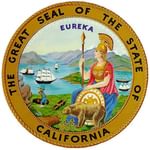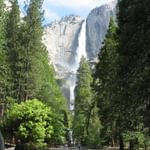
State & Federal
California

Timeline
1977 – State Legislature overrides Governor Jerry Brown’s veto and reinstates the death penalty, allowing for capital punishment in first degree murders with any of 12 special circumstances.
1978 – California voters pass the Briggs Initiative which creates California’s current death penalty statute, adding 16 more special circumstances, for a total of 28 death-eligible crimes.
1990 – Voters pass two additional initiatives, adding 5 more special circumstances, for a total of 33 death-eligible crimes.
1996 – Voters pass two initiatives that add 3 additional special circumstances, bringing the total to 36 death-eligible crimes.
2000 – Two voter initiatives add another 3 special circumstances to California’s death penalty law, for a total of 39 death-eligible crimes.
2012 – Proposition 34 was on the ballot, which would have repealed the death penalty and replaced it with life in prison. The proposition failed, but received 48% support from voters.
2016 – Proposition 62 was on the ballot, which would have replaced the death penalty with a strict life sentence in prison. In response, death-penalty proponents presented a counter-proposition, Proposition 66, which sought to retain the death penalty and expedite state capital appeals by changing the way in which appeals are processed. Proposition 62 failed, but received 46% support from voters. Proposition 66 passed with 51% support from voters.
2017 – The Supreme Court of California upheld the constitutionality of Proposition 66 but severely limited the scope of its core provisions. In Briggs v. Brown, the court sustained portions of the measure that shifted which court will hear capital cases, increased the pool of death-penalty appeal lawyers by requiring lawyers who accept other appellate appointments to also take capital cases, eliminated public review of execution methods, and limited both the issues that can be raised in capital habeas appeals and the time courts have to decide them. However, the majority ruled that the measure’s flagship provision — a five-year deadline on appeals by condemned prisoners — was “directive, rather than mandatory”; that “courts must make individualized decisions based on the circumstances of each case”; and that “prisoners may seek to challenge [the time limitations and limitation on the claims they are permitted to raise] in the context of their individual cases.”
2019 — On March 13, 2019, Governor Gavin Newsom signed an executive order placing a moratorium on the death penalty in California. “The intentional killing of another person is wrong and as Governor, I will not oversee the execution of any individual,” said Governor Newsom. “Our death penalty system has been, by all measures, a failure. It has discriminated against defendants who are mentally ill, black and brown, or can’t afford expensive legal representation. It has provided no public safety benefit or value as a deterrent. It has wasted billions of taxpayer dollars. Most of all, the death penalty is absolute. It’s irreversible and irreparable in the event of human error.” At the time, there were 737 prisoners on California’s death row. The moratorium remains in place as of October 3, 2023.
2020 — COVID-19 kills more California death row prisoners than the state has executed in 27 years.
2022 — Governor Gavin Newsom signs The Racial Justice Act for All bill into law, which provides a process for death-row prisoners to receive relief from convictions or death sentences obtained “on the basis of race, ethnicity, or national origin,” and AB2657, which removes those who are permanently mentally incompetent from death row.
2023 — Governor Gavin Newsom moves forward with efforts to dismantle San Quentin’s death row by integrating inmates from death row into general prison populations throughout the state.
Famous Cases
Manuel Babbitt was a Vietnam War Veteran who was executed in 1999 for murdering an elderly Sacramento woman. Babbitt served two combat tours in Vietnam and, while on death row, received the Purple Heart for wounds he received during the Battle of Khe Sanh. After the war, Babbitt was diagnosed with a post-traumatic stress disorder and paranoid schizophrenia. He soon became homeless. In 1980, he broke into the home of 78-year-old Leah Schendel, assaulted her and stole some food as well as some of her belongings. Schendel died of a heart attack. He laid a mattress over her and toe tagged her. Babbitt said that he was having a Vietnam War flashback. During the sentencing phase of the trial, James Schenk, Babbitt’s defense lawyer, did not introduce any evidence of Babbitt’s mental illness to the jury, prompting him to later say that he “failed completely” during this crucial phase of the trial. Before his execution, Babbitt refused his last meal and asked for the allotted money to be donated to a homeless Vietnam Veteran. Prison officials refused his request. (E. Nieves, “Vietnam Veteran Executed for 1980 Murder.” The New York Times, May 5, 1999.)
In the early 1970s, Stanley Williams co-founded the Crips, a violent street gang from Los Angeles. Williams was sentenced to death in 1981 for the murders of four people that took place during a robbery spree in 1979. While he admitted that he had committed many brutal acts while he was involved in the Crips, Williams always maintained his innocence with regards to the murders for which he was sentenced to death. In 1996, Williams co-authored “Gangs and Wanting to Belong,” the first in a series of anti-gang children’s books. He later went on to write “Life in Prison” and “Blue Rage, Black Redemption”. For his anti-gang youth outreach, Williams was nominated for the Nobel Peace Prize a total of six times. Many notable leaders, including Archbishop Desmond Tutu, Mikhail Gorbachev, and Rigoberta Menchu, asked the Governor to spare William’s life. But then-Governor Arnold Schwarzenegger refused to grant clemency and Williams was executed by lethal injection at San Quentin State Prison on December 13, 2005. (“Timeline: Tookie’s Path to Death Row.” NPR News, December 13, 2005.)
Thomas Thompson was executed in 1998 for the rape and murder of Ginger Fleischli despite substantial evidence that he was innocent and that someone else had committed the murder. In 1981, Thompson and Fleischli spent a night drinking together in Long Beach. Thompson claimed that he and Fleischli had consensual sex before going to sleep and that she had disappeared by the time he awoke the next morning. When Fleischli’s body was discovered, a footprint near her grave was linked to Thompson’s roommate and Fleischli’s ex-boyfriend: David Leitch. Leitch had a history of violence and had threatened Fleischli just two weeks before her disappearance. Despite this evidence and cloth fibers from Fleischli’s clothing that were discovered in the trunk of Leitch’s car, Leitch and Thompson were both arrested and charged with the murder. They were tried separately, Thompson first. The prosecution proceeded on a theory that Thompson had raped and then killed Fleischli to cover up the rape, and that Leitch’s involvement was limited to helping dispose of the body. (A rape-murder special circumstance allegation rendered Thompson eligible for the death penalty). The prosecutor relied heavily on two jailhouse informants, one of whom was Edward Fink, who testified that Thompson said he raped the victim and then killed her to prevent her from reporting the rape. Leitch was tried by the same prosecutor. The prosecution’s theory at Leitch’s trial was that Leitch was a violent drug abuser who had the sole motive to commit the murder. Leitch was found guilty of 2nd-degree murder and sentenced to 15 years to life. Thompson’s case was overturned twice on appeals, with a conservative US District Judge saying that the case left him with an “unsettling feeling.” After this decision was reversed, the 9th Circuit Court of Appeals again overturned the death sentence, stating that there was doubt over Thompson’s guilt. Eventually, the US Supreme Court overturned this decision on a technicality, and Thompson was executed. (E. Bailey, E. Schrader, and T. Hua, “Killer put to Death by Injection at San Quentin.” The Los Angeles Times, July 14, 1998.)
Notable Exonerations
In early 1941, Fred Rogers’s mother committed suicide by inhaling chloroform. Nine months later his grieving father died of smoke inhalation after deliberately setting his house on fire. Police, suspicious of the two deaths, arrested Fred Rogers for murder. During the interrogation, the interviewers told Rogers that they had enough evidence to send him to the gas chamber, but he would spare his life if he confessed. Rogers quickly confessed to the two murders. At trial however, Rogers recanted his confession, but was eventually found guilty and sentenced to death. When the California Supreme Court reviewed the case in 1943, they noted the lack of substantial evidence against Rogers as well as the questionable police methods used to elicit the confession, and the conviction was overturned. When Rogers was retried, the court dismissed all charges and released him.
Paul Imbler was sentenced to death for the 1961 murder of a store owner in Los Angeles. The owner’s wife – who had witnessed the murder – picked Imbler’s face out of a collection of police photographs. Additionally, a witness named Alfred Costello claimed to have chased Imbler after the attack, recovering his coat and firearm in an alley. After Imbler was sentenced to death, independent investigators discovered that Costello, an ex-con and mental patient who was also running an illegal bookmaking operation out of the victim’s store, had produced unreliable testimony in court. Furthermore, the firearm discovered in the alley was never conclusively linked to Imbler. With this new information, the California Courts admitted that he had been convicted in error, and released him ten years after he was arrested.
Vicente Benavides Figueroa, wrongly convicted and sentenced to death in 1993 on charges that he had raped, anally sodomized, and murdered his girlfriend’s 21-month-old daughter, was exonerated on April 19, 2018. A trial court in Kern County, California formally dismissed all charges against Benavides, a Mexican national, two days after Kern District Attorney Lisa Green said her office would not be seeking a retrial. The California Supreme Court had granted the former farmworker a new trial in March 2018, calling his convictions for sexually assaulting and murdering Consuelo Verdugo a product of “extensive,” “pervasive,” “impactful,” and “false” forensic testimony. The girl, the court said, had never been sexually assaulted and may actually have died from being hit by a car.
Notable Commutations and Clemencies
William Lindley was sentenced to death for the 1943 murder of a 13 year-old girl. The redheaded Lindley was an illiterate and mentally ill itinerant farmer from Central California. During the investigation, police relied on testimony from a shepherd who witnessed the attack, claiming that the attacker was a redhead. Furthermore, the little girl herself described the attacker as a redhead before she died. Finally, a jailhouse informant claimed that Lindley confessed to the murder. After the jury sentenced Lindley to death, Al Matthews, an attorney from Los Angeles, began independently investigating the case. Matthews discovered that the shepherd who witnessed the attack was colorblind, and thus unable to know whether or not the attacker was indeed a redhead. Matthews also discovered that another redheaded farmer had been in the vicinity during the crime, and had been noted to have mysterious scratches on his face after the attack. Further, witnesses came forward claiming that this farmer had repeatedly confessed to the murder. Even with this new information, the California Supreme Court did not immediately overturn the sentence. In January 1946, Lindley came within hours of being executed before a temporary reprieve came. In July of that year, he came within two days of being executed before another reprieve came. In October, he won a third reprieve a week before his scheduled execution. It was not until 1947 that Governor Earl Warren commuted Lindley’s sentence to life imprisonment.
In 1967, Governor Ronald Reagan commuted Calvin Thomas’s sentence from death to life imprisonment after it was discovered that Thomas suffered from organic brain damage. Thomas had been convicted of murdering a three year-old boy. Thomas’s brain damage was discovered after the trial. To date, this is the last time a California governor has commuted a death sentence. (H. Chiang, “No Clemency if History is a Precedent.” San Francisco Chronicle, April 26, 1999.)
Milestones in Abolition and Reinstatement
1872 – Capital punishment authorized in state Penal Code
1972 – California Supreme Court declares death penalty unconstitutional. 107 condemned prisoners resentenced. California voters pass Proposition 17, an initiative that amends the California Constitution to provide that the death penalty is not cruel or unusual punishment.
Other Interesting Facts
California’s death row is the largest in the country with more than 665 condemned prisoners (as of January 1, 2023 DRUSA). During the 2016 campaign on Propositions 62 and 66, the Yes on 62 (death penalty abolition) campaign made the dramatic assertion that “California is home to the largest death row population in the Western Hemisphere.” PolitiFact California fact-checked the claim and rated it as accurate. C. Nichols, “Truth be told: California has ‘largest death row in Western Hemisphere’,” KPCC, Capitol Public Radio, August 12, 2016.

Resources
DPIC RESOURCES: Analysis and Fact-Check of 2016 California Referenda. California had two death penalty initiatives on the ballot in November 2016, one that sought to repeal the death penalty (Proposition 62) and one that sought to limit state court judicial review of death penalty appeals (Proposition 66). As Californians prepared to vote on the referenda, DPIC created a web page to offer fact-checking and context. Our page presented the official arguments that each campaign wrote for the California Voter Guide, with statements highlighted as verified, misleading, or mixed, with links to relevant background information. In addition, it provided detailed explanations on issues of race, innocence, and costs to further educate voters about the potential impacts of abolishing capital punishment (Prop. 62) or curtailing the appeals process (Prop. 66).
- Death Penalty Focus
- ACLU of Northern California – Death Penalty Project
- California Crime Victims for Alternatives for the Death Penalty
- California People of Faith Working Against the Death Penalty
- SAFE California — supporting a ballot initiative to replace California’s death penalty with life imprisonment without parole
- Department of Corrections
- Prosecutors
- Public defender’s office
- Victims’ services
- California Cost Study 2011 - DPIC summary of “A roadmap to mend or end the California legislature’s multi-billion dollar death penalty debacle” from Loyola of Los Angeles Law Review by Judge Arthur L. Alarcon & Paula M. Mitchell.

California Execution Totals Since 1976
News & Developments
News
Aug 25, 2025
State Spotlight: California Death Row Shrinks Sharply in 2024, Driven by the Resentencing of At Least 45 People to Life Sentences or Less
This week we are featuring some articles from the first part of 2025 that we think are worth another look. We’ll be back with new articles next week. This article originally ran on February 11, 2025. When California Governor Gavin Newsom announced a moratorium on executions in 2019, he said that the state’s“death penalty system has been, by all measures, a failure.” He explained that the death penalty“has discriminated against defendants who are mentally ill,…
Read MoreNews
Aug 11, 2025
Business Leader Calls for End to California’s “Broken” Death Penalty System
A prominent business executive and member of a larger coalition of over 500 global business leaders is calling on California Governor Gavin Newsom to commute all death sentences in California to life without parole. In a July 2025 op-ed, Matthew Stepka, a member of Business Leaders Against the Death Penalty, calls California’s death penalty system a failure of both justice and fiscal responsibility. > “If any company or product I evaluated had an error rate…
Read MoreNews
Jul 08, 2025
ACLU Report Shows How Death Penalty Jury Selection Discriminates Against Black Americans, Women, and People of Faith
A new report from the ACLU documents how the process of selecting juries for death penalty cases systematically excludes Black prospective jurors, women, and people of faith, fundamentally undermining the constitutional promise of a trial by a jury of one’s peers. The report, Fatal Flaws: Revealing the Racial and Religious Gerrymandering of the Capital Jury, examines the practice of“death qualification,” a requirement that potential jurors must be…
Read MoreNews
Jun 30, 2025
Hundreds Rally to Urge Commutation of California’s Death Row
On June 26, 2025, more than 200 Californians and representatives of civil rights organizations gathered at the state Capitol to urge California Governor Gavin Newsom to commute all death sentences. Speakers at the gathering called California’s death penalty statute unconstitutional and noted persistent evidence of racial bias, historic ties to lynching, ineffective protection of innocent lives, and high costs. California, home to the nation’s largest death row, is…
Read MoreNews
May 06, 2025
New Analysis: How Race Affects Capital Charging and Sentencing of 18- to 20-Year-Olds
In commemoration of the 20th anniversary of the U.S. Supreme Court’s landmark decision ending the juvenile death penalty, the Death Penalty Information Center (DPI) has released a new report: Immature Minds in a“Maturing Society”: Roper v. Simmons at 20, detailing the growing support for the idea that individuals ages 18, 19, and 20 should receive the same age-appropriate considerations that juveniles now receive in death penalty cases. The report also reveals…
Read More

